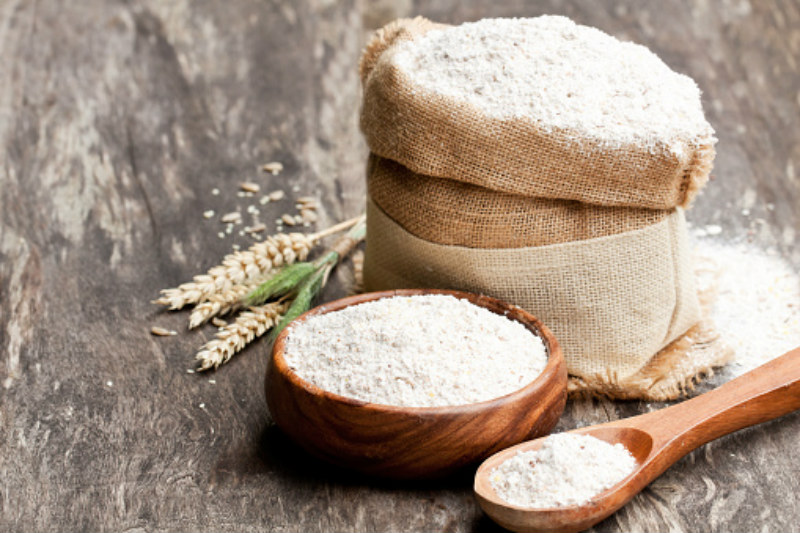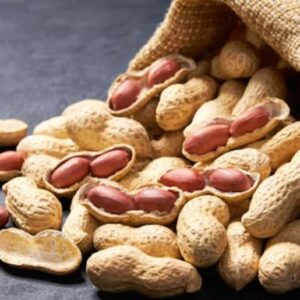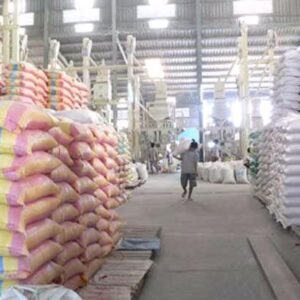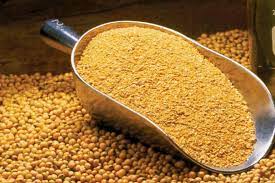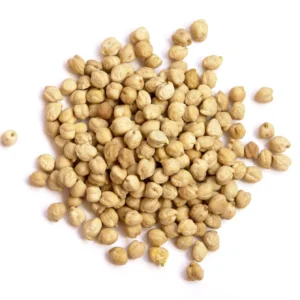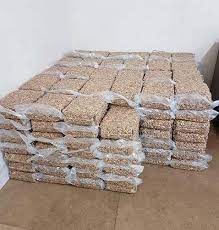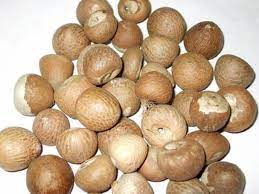Wheat flour is made from grinding up parts of the wheat grain. There are three main parts of the grain:
- The endosperm, or protein/starchy part
- Germ, the rich in protein/fat/vitamin part
- Bran, the fiber-rich part
White flour is made from only the endosperm. Brown flour includes the germ and bran. Whole grain flour includes all three parts. Once each part has been separated, it is ground into a powder. White flour has a naturally yellow-ish color but is often bleached or mixed with oxidizing chemicals to produce a white color.
Wheat is classified by several different characteristics: the season it is grown (spring or winter wheat), its color, whether it is “hard” or “soft,” by the amount of protein it contains, and by the amount of a specific protein, called gluten that it contains. Hard wheat is usually a bronze-color and has a higher gluten content than soft wheat, which is a light golden color.
Varieties
Gluten is naturally occurring in the wheat. It’s the protein that gives baked goods structure. Glutens develop and become more elastic when the dough is kneaded. Strong flours are those made from hard, high-protein wheat. They have higher gluten content. Flours that are made from low-protein, softer wheat are called weak flour and have less gluten.
There are a number of wheat flours, including:
- All-purpose flour
- Bread flour
- Cake flour
- Pastry flour
- Self-rising flour
- Whole wheat flour
Flour Uses
Flour is an essential ingredient for most home chefs. You can use it to make bread, baked goods, pancakes, and more. Additionally, it can be used to thicken sauces or create a roux. Flour is also used for coating foods like fried chicken or cutlets. Finally, flour is a key ingredient in making pasta.
How to Cook With Flour
Flour should be used according to the recipe and its specific use. For tender baked goods, it can be helpful to sift the flour into the mixing bowl. For baked goods like bread, the flour mixture will need to kneaded and often will need time rest. This will help activate the gluten proteins.
What Does It Taste Like?
Raw flour should not be eaten. Flour is a raw agricultural product, so it has not been treated to kill germs. If there are any bacteria present in flour, they are killed when food made with flour is cooked. White flour does not have an odor while whole wheat flours may smell a little nutty.
Wheat Flour Substitute
There are many wheat flour substitutes on the market. One major reason for swapping out flour is gluten sensitivity or intolerance. Soy flour, wheat germ, cornmeal, oat flour, spelt flour, and quinoa flour are just some of the wheat flour substitutes available. The flour substitute to use will depend on the recipe, your taste preference, and availability.
Flour Recipes
Flour is essential in most baked goods but is also a key ingredient in gravies, sauces, pasta, and other tasty foods.
Where to Buy Wheat Flour
Wheat flour can be found in any grocery store in the baking aisle. It usually comes in sealed thick paper-based containers. Make sure the packaging is not ripped and take care when transporting it home from the store. Open flour can cause a big mess. For alternative flours or specialty flours like pastry flour, a baking store, better grocery store, or online retailer will stock these items.
Wheat Flour Storage
Open the original flour packaging and transfer your flour to an airtight container. Glass or plastic works well. Keep your flour dry. Moisture will ruin flour. Store the flour in a cool, dark place like a pantry, refrigerator, or freezer. If you freeze your flour, which will help maintain quality for a longer time, use a freezer bag to prevent any moisture or odors from getting absorbed into the flour.


